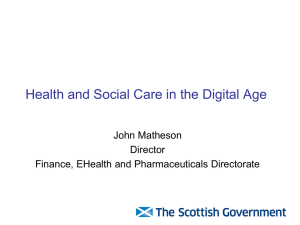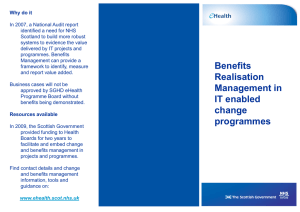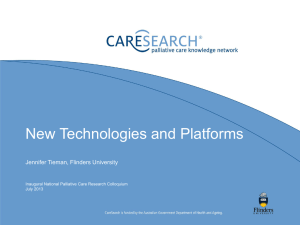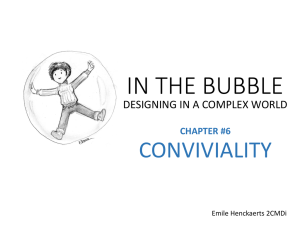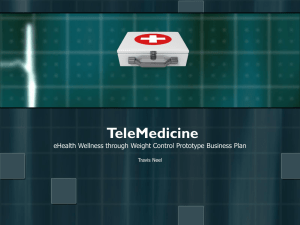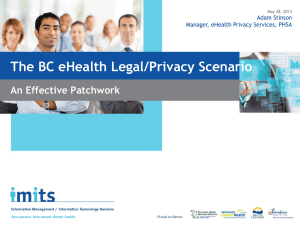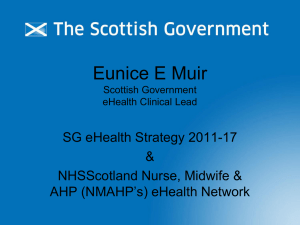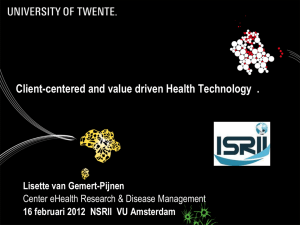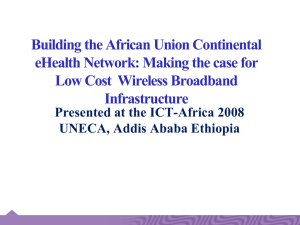eHealth in palliative care (3.51MB ppt doc)
advertisement
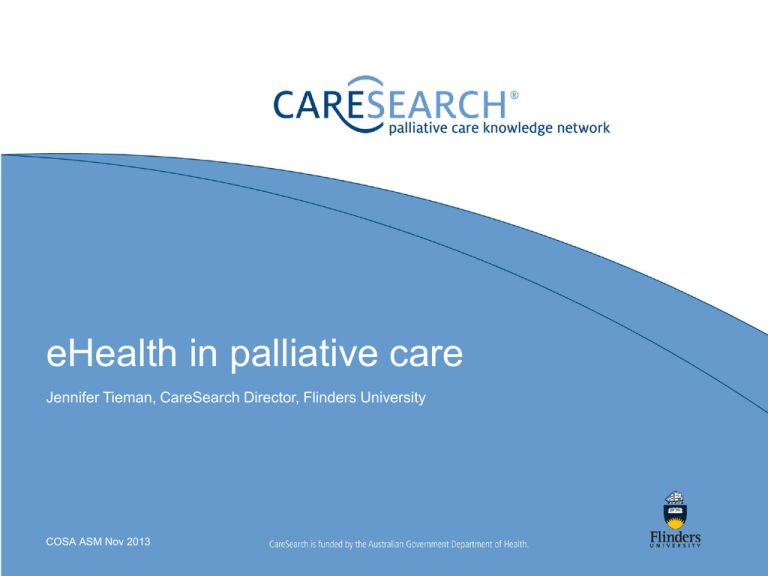
eHealth in palliative care Jennifer Tieman, CareSearch Director, Flinders University COSA ASM Nov 2013 Overview • • • • What is eHealth eHealth agenda in Australia eHealth and palliative care Australian examples – Telehealth in the Home Project • Into the future What is eHealth? • Proliferation of terms: – Ehealth, telehealth, telemedicine, mhealth ….. teleoncology, teledermatology • World Health Organization: eHealth is the transfer of health resources and health care by electronic means. – delivery of health information, for health professionals and health consumers, through the Internet and telecommunications – using the power of IT and e-commerce to improve public health services, e.g. through the education and training of health workers. – use of e-commerce and e-business practices in health systems management. eHealth drivers • Technology availability and capability • Consumer and practitioner uptake • Health system demands – – – – Social demography Health costs Equity and access Geography • Innovation eHealth in Australia • National eHealth Strategy 2009 – Commonwealth-State MOU 2012-2014 • National Digital Economy Strategy – Health and Ageing Goal • NHETA – Clinical documents including PCEHR, – eFoundations including standards, interoperability, security and access – National infrastructure including health identifiers and clinical terminology – Implementation activities • NBN • MBS Online – Telehealth • Policy Directions (subject to change) eHealth and palliative care • Health information – Evidence/information by mode for consumers/practitioners – Systems for communication over distance and over time – videoconferencing; remote monitoring; sensor, alarms – Clinical decision supports • Improve public health – Education and training (formal; professional development; carers; MOOCs) – Data mining – Bereavement care/surveillance • e-commerce/e-business – eHealth record – Appointment scheduling – Research Management Systems Australian examples • Education and Training – Palliative Care Online Training • Phone apps – eHospice – CareSpace • Videoconferencing – WA Cancer and Palliative Care Network Clinical consultations, Virtual family visit • Patient care – Telehealth in community trial (Flinders University) – End of life dementia care (Hammondcare) Telehealth in the Home: Palliative Care, Aged Care and Clinical Rehabilitation in SA • Funded under Telehealth Pilot Program. An initiative funded by the Australian Government • Palliative care study is one of three studies – Structured online face to face: patient-nurse; carer-network facilitator – Patient online self-assessments: SAS, AKPS, AQoL, FitBit – Carer online self-assessment: SAPS tool – Virtual case conference Outcomes of interest • Telehealth feasibility • Patient, carer, professional engagement • Service delivery changes • Clinical metrics • Cost elements What we’ve learned so far • Complex, time consuming • Articulating practice • Apps are just the surface – Interoperability, integration of systems, processes, people, responsibility • Change – Change management, rate of change • Importance of clinical value • Not enough to know if we can do it, need to know if it is worth doing State of play: Bigger picture • Preventive and Therapeutic Effects; • Health Service Utilisation; • Challenges & Opportunities for Enhanced User Centered Design; • Low-powered studies/inconclusive evidence; and • Future trends in telehealth. Abbott PA, Liu Y. 2013 A scoping review of telehealth Yearb Med Inform. 8(1):51-8. Into the future • Nothing is standing still – Data mining, data registries; iTune app store; robotics; Crowd sourced health research; IBM Watson; wearable wireless devices • Consumers are changing – 2 year old tapping the picture book • Device agnostic/BYOD • Expectations and realities – Costs, value, risk, liabilities, responsibilities, eHealth in palliative care • Need to recognise that palliative care is already engaged in eHealth • Starting to move into formally developed systems • Protecting clinical and consumer involvement in eHealth development • Need to ensure continuous currency CareSearch would like to thank the many people who contribute their time and expertise to the project, including members of the National Advisory Group and the Knowledge Network Management Group. CareSearch is funded by the Australian Government Department of Health. www.caresearch.com.au
